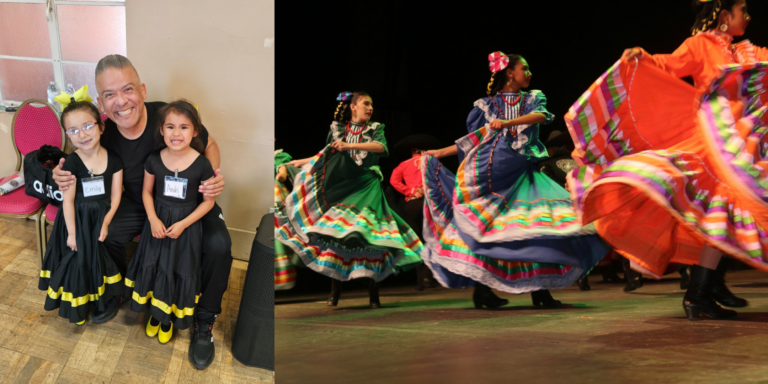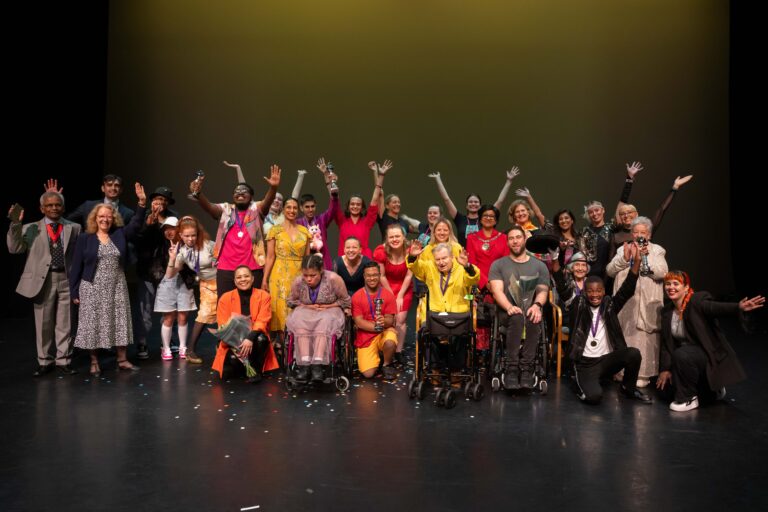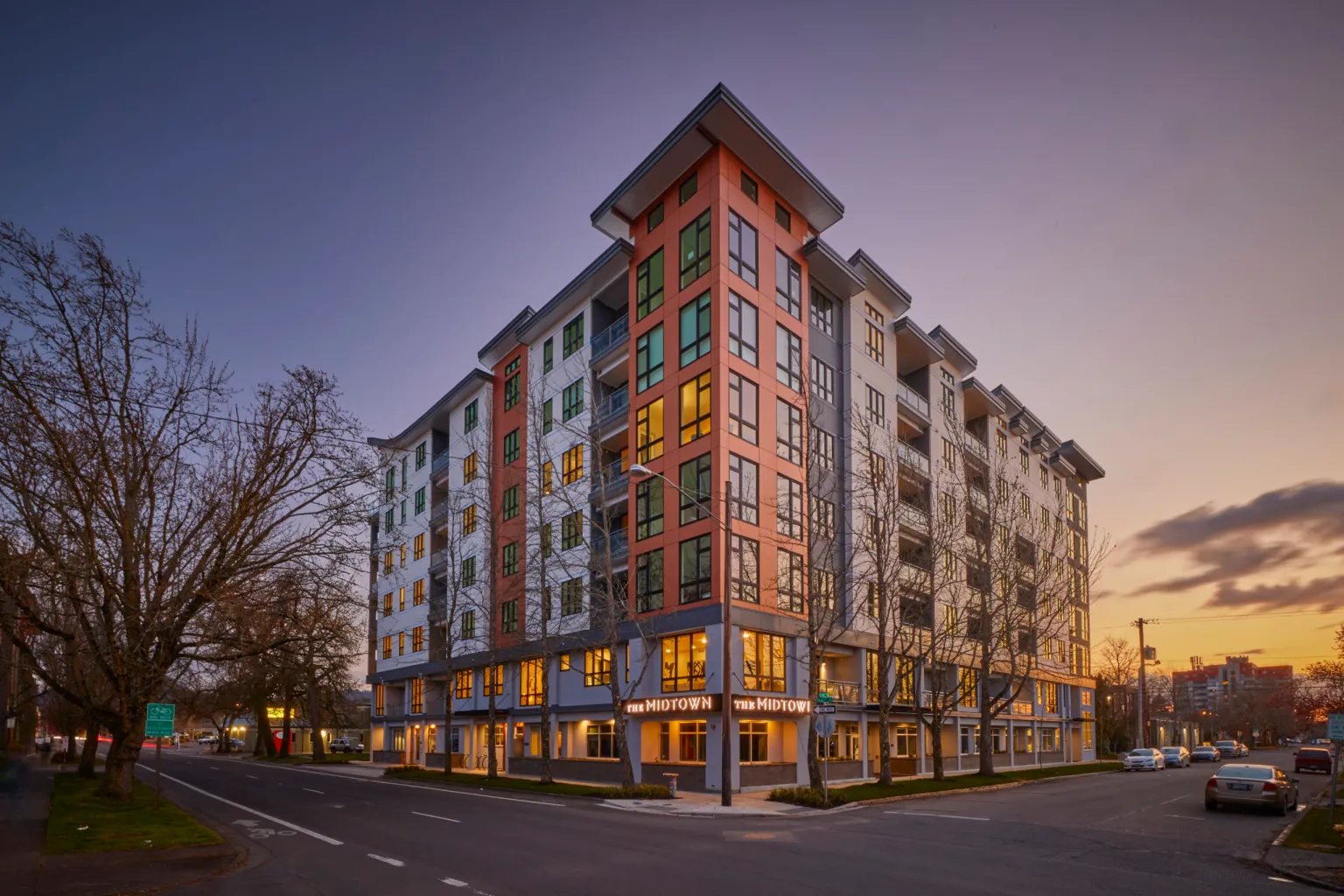
Creating multiuse, community-oriented spaces can have big benefits for dance businesses of all kinds.
For many years, Eugene Ballet was nomadic, bouncing between studios and office spaces throughout the small Oregon city and beyond.
During that time, executive director Josh Neckels says, “we kept getting the same neighbors—these other arts groups who would hear we were moving into a building and find that the developer or landlord was open to a nonprofit rate.”
In 2008, when the company moved into its own space, it just made sense to rent to those same groups—both as a cost-saving strategy and as a way of providing small arts organizations with reliable space from an understanding landlord.
But Eugene Ballet and its tenants soon found the mutual benefits of this arrangement to go beyond the financial and logistical—the co-location of arts organizations of various genres led to fruitful collaborations and synergistic relationships. So when Eugene Ballet had the opportunity to partner with a developer on the sprawling Midtown Arts Center, the company expanded this model, creating a hub that eight local arts nonprofits call home and that includes an art gallery plus space for the community to use.

While sometimes such arts hubs spring up organically, like in downtown areas packed with theaters, museums and studios, more often, they are created with great intention—and for good reason. Whether it’s a dance studio wisely opening its space up for multiple uses, a ballet company creating a home not just for its dancers but its entire community, or an arts service organization linking up with a developer, community- and collaboration-oriented spaces can have big benefits for dance organizations of all kinds.
The Developer Partnership
Earlier this year, The New York Times reported on the rising popularity of mixed-use developments that see real estate developers partnering with museums, theaters and other arts organizations to create hubs of residential, commercial and arts spaces.
In many ways, it’s a dream scenario for a dance organization: Though each partnership works differently, such arrangements often result in arts organizations having access to opportunities that would typically be out-of-budget, as was the case with Midtown Arts Center, which opened last year.
In that case, a developer was looking for an anchor commercial tenant for a condo building, and over years of conversations—and the developer’s flexibility to instead work with a nonprofit tenant—a plan emerged: Eugene Ballet would pay at-cost for 30,000 feet (double the size of its previous space) of the 120,000-square-foot building, the rest of which would be condos. (Neckels estimates it would have cost about double had they not partnered with the developer.) The dance company launched a multiyear capital campaign, which ultimately fell around $2 million short (they are now carrying a mortgage), but Neckels says it’s a small price to pay for the security of owning their own space.
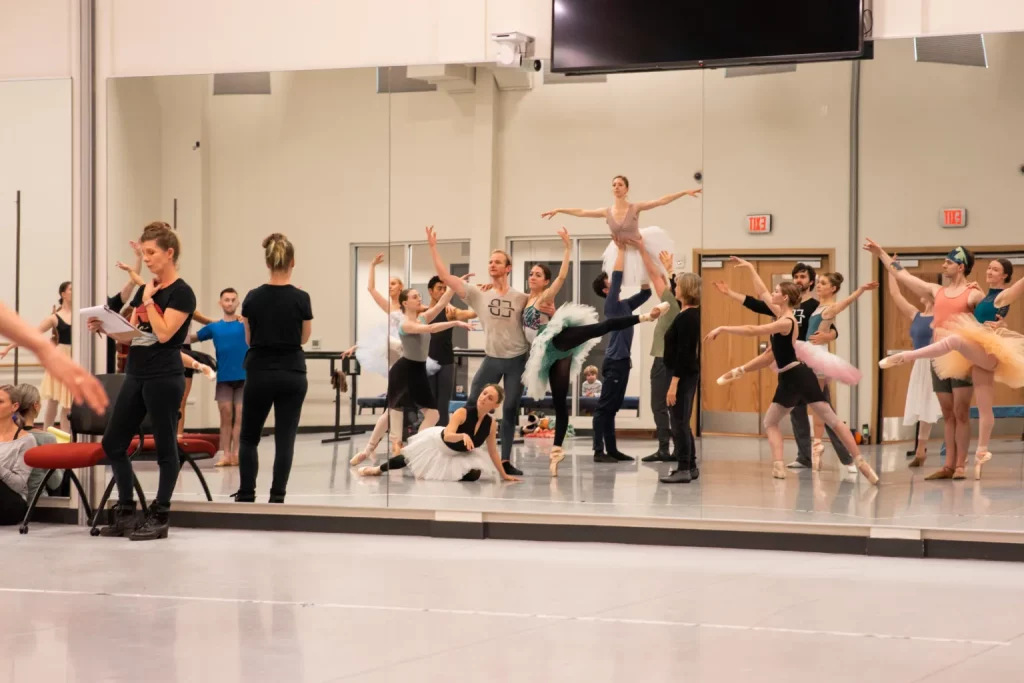
Arts organizations that find themselves in negotiations with developers or other commercial interests need to “come at it from a place of real grounding,” says Cristy Johnston Limón, a consultant to nonprofits on their construction management, real estate development projects, financing and fundraising, as well as former executive director of poetry and spoken-word organization Youth Speaks. “You should have a clear set of values and boundaries you can communicate in a straightforward way,” acknowledging that you may have different needs or values than those partners.
In 2019, Limón responded to a request for proposals from a local housing developer, who was looking for social service providers to activate a building containing 127 affordable-housing units. Limón was able to secure a 35-year lease on the space for Youth Speaks. It would share the space with another small arts nonprofit, at just 25 percent of the going market rent. (The two organizations did need to jointly fundraise $2 million to build out the space, which opened earlier this year.)
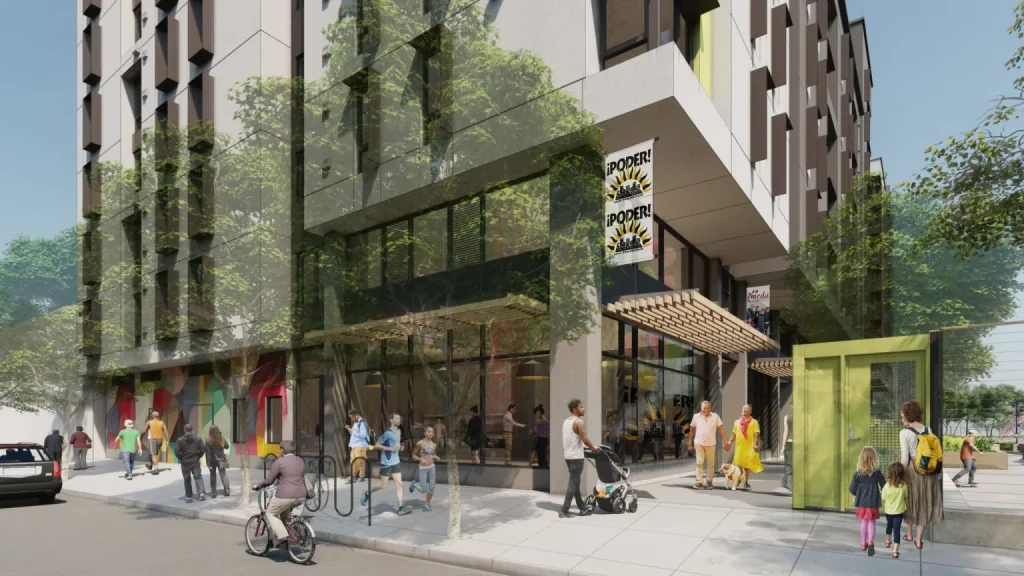
And what about the residents of these buildings? Having potential audiences, clients or participants living in such close proximity is an opportunity—but not one that should be taken for granted, says Joanne Bernstein, author of Standing Room Only: Marketing Insights for Engaging Performing Arts Audiences. She says such folks need the same kind of marketing efforts as any lead, regardless of their proximity.
At Youth Speaks, this means working closely with the property management company to engage residents and share events and programs. And at the Midtown Arts Center, Eugene Ballet plans to invite residents to special dress rehearsals, and offer discounted tickets to performances. Neckels says they’ve already seen residents offer to volunteer their time or donate pieces to the on-site art gallery.
The Multiuse Community Space
Dance businesses need not rely on a real estate developer to make their spaces into multiuse destinations. When Yasha Jacob Michelson opened his MiMoDa Studio in a developing neighborhood in Los Angeles, his main priority was his own dance and theater work. But soon, the studio became a popular space for filming, and Michelson’s rental business exploded. Eventually, he opened a coffee shop in the adjoining space, and now the two businesses have a symbiotic relationship, especially for event rentals—from concerts to b’nai mitzvah—that include food and drink services.
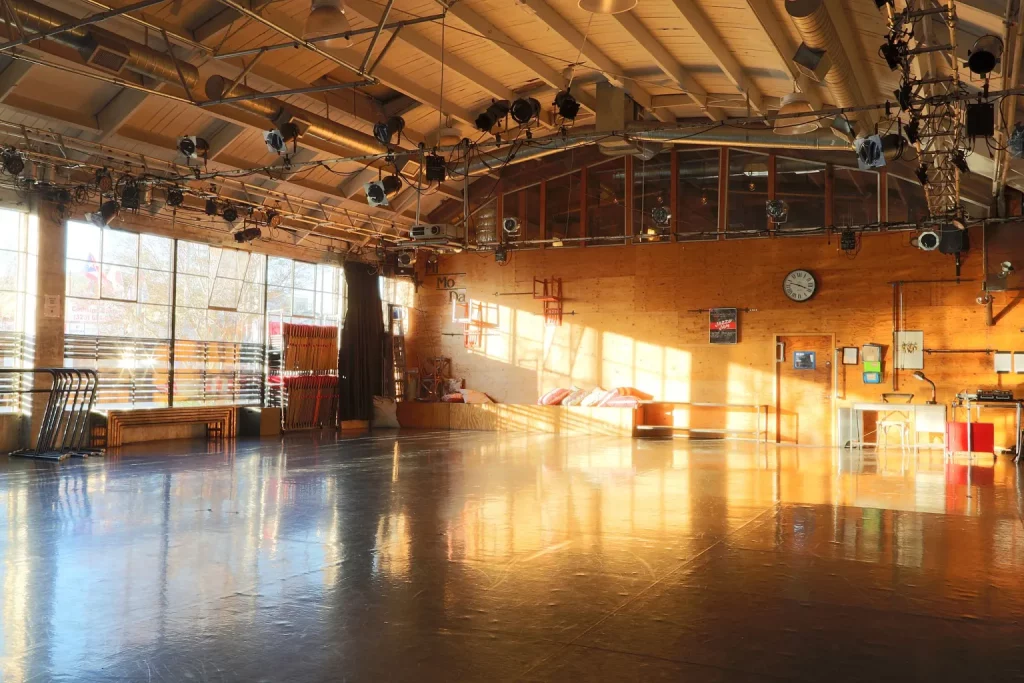
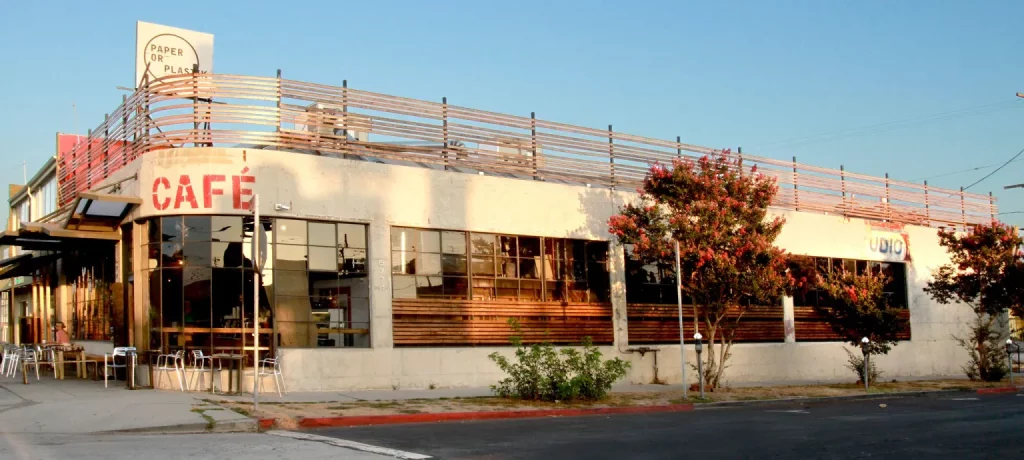
Eugene Ballet, too, rents spaces in its Midtown Arts Center for all kinds of uses, and the first-floor gallery draws in foot traffic that can lead to deeper engagement with the Center’s arts organizations.
Philadelphia Ballet has similar plans for its expanded and renovated new 58,000-square-foot space, opening in 2024, which will include a first-floor gallery featuring local artists and spaces for film screenings, tours, classes, children’s events and more.
Executive director Shelly Power says that when she joined the company in 2017, she worked to revise the company’s expansion plans from being focused primarily on the needs of dancers and dance students to also functioning as a community hub. This meant adding a large gathering space with moveable furniture, a catering kitchen for events, a spacious area where parents can relax as they wait for students, and benches outside the building where passersby can look above them to see the dancers rehearsing.
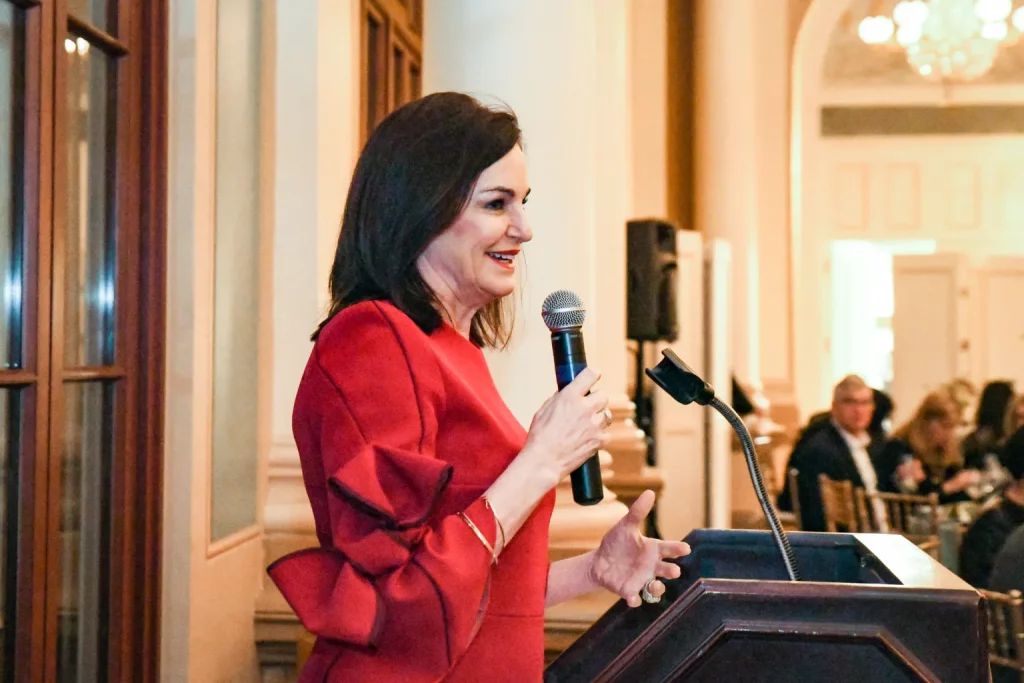
How to Create Your Own Mini Arts Hub
- Start small. You don’t need to have lots of space or resources to begin making mutually beneficial connections with other businesses or arts organizations in your area. Perhaps that looks like organizing a community art walk or partnering with a neighboring restaurant to cross-promote one another’s businesses.
- Make sure there’s an ROI. Opening a cafe at your dance studio or partnering with another business on an event are ideas with potential—but make sure you’re getting more out of them than you’re putting into them, says Bernstein, whether that that return on investment means a profit, new leads or something else.
- Practice strong communication. When working with other businesses or organizations, communicate early and often to anticipate issues before they happen, says Bernstein. (She gives the example of companies who share a theater all wanting to perform during Nutcracker season.)
- Don’t assume crossover will just happen. Hosting yoga classes when your studios aren’t otherwise occupied may be an appealing new revenue stream or community-engagement strategy. But don’t bide your time waiting for those clients to buy tickets for your show, or engage with you in another way, says Bernstein. They’ll still need further marketing to take the next step.
Lauren Wingenroth is a New York City–based writer and a former editor of Dance Business Weekly.

